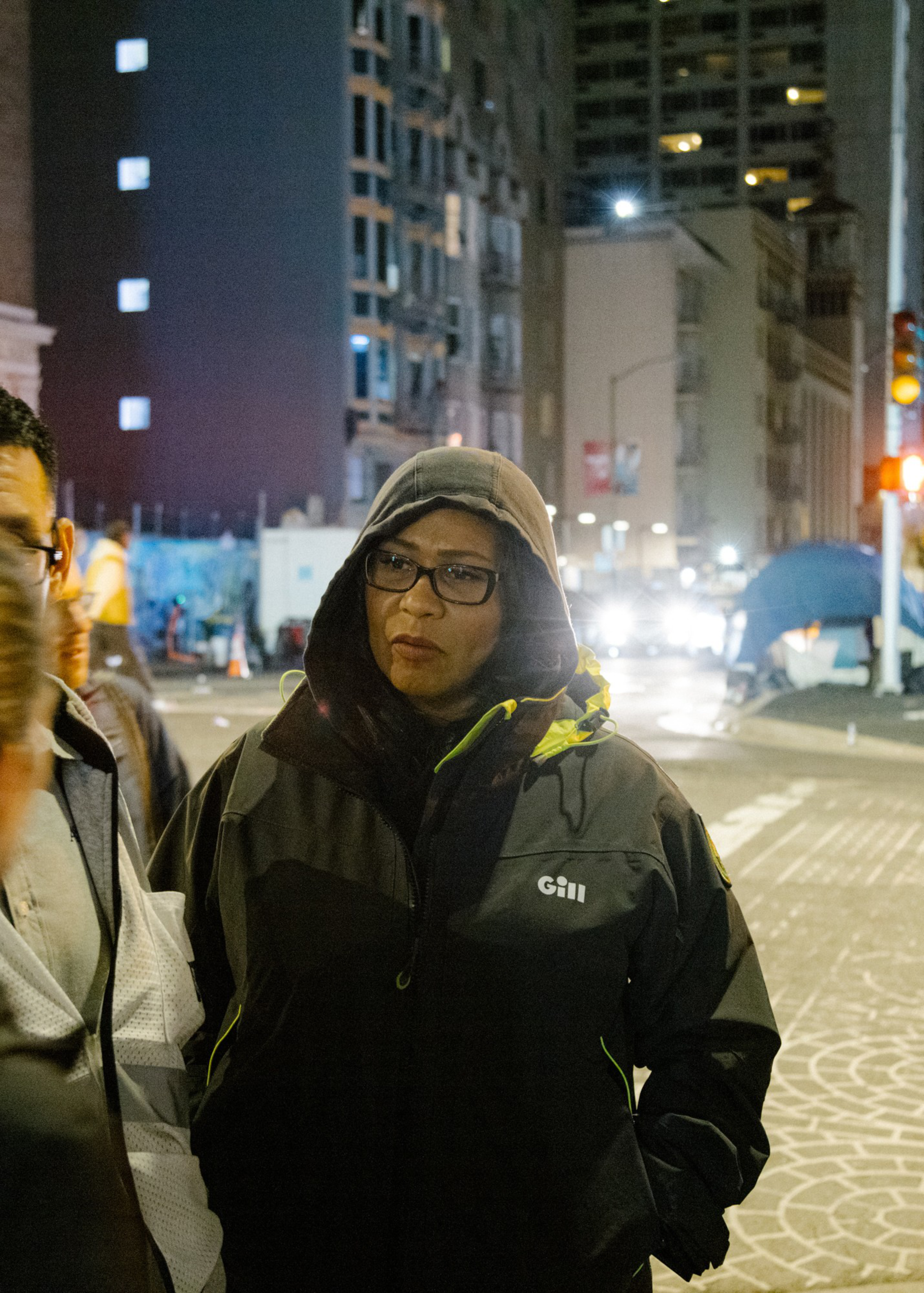Mayor London Breed took to social media with what seemed like exciting news on Thursday.
“San Francisco’s street homelessness population has reached its lowest level in 10 years,” Breed announced (opens in new tab).
“This means there are fewer people living in tents, structures, or directly on our streets than there have been since before 2015,” she wrote. “This is progress.”
But whether this is truly progress remains up for debate.
A deeper look at the data Breed cites, the biennial Point-in-Time Count conducted in cities across the country, shows the total number of homeless people in the city, not just those living on the sidewalks, has risen by 7% since 2022.
The number of homeless families, often known to sleep on couches or in cars, nearly doubled; people experiencing chronic homelessness increased by 9%; and the number of people living in vehicles rose by a whopping 37%.

Breed’s announcement instead focuses solely on the number of people found sleeping on the city’s streets during January’s one-night count. The survey is conducted by a large number of volunteers, city workers and nonprofit employees in a single night and involves splitting the city into sections and walking around counting sightings of homeless people.
The data shows a 16% decrease in total unsheltered homelessness and a 39% increase in people staying in shelters since 2019.
Point-in-Time problems
But Breed’s focus on the number of visibly homeless people, rather than the surge of total homeless people and families, illustrates some of the frustrations experts have with the Point-in-Time Count.
Many experts have argued, and even the Department of Homelessness and Supportive Housing acknowledges, that numbers gathered from the Point-in-Time Count shouldn’t be taken at face value.

Conducting a visual survey of people experiencing homelessness has obvious limitations. One is that many homeless people aren’t immediately visible when you stroll around the city.
“We shouldn’t conflate the number of tents with the number of people,” said Chris Herring, a University of California Los Angeles sociology professor whose research is based in San Francisco.
Herring explained that the more enforcement measures that are taken against homeless people, the less likely they are to show up in the city’s tent counts. But this doesn’t mean they’ve disappeared.
In October, following clarification on a federal lawsuit against the city for its homelessness response, local police resumed enforcing anti-camping laws against homeless people who have reasonable access to shelter.
Herring added that San Francisco is unique because Point-in-Time Count volunteers are instructed not to put themselves at risk by going down dark alleys to count every single person.
“In some cases, unhoused folks, in order to avoid regular enforcement, move to more invisible areas,” Herring said. “In doing so, they’re also often hidden from these counts.”

This is particularly true with homeless families, which experts say the Point-in-Time Count has historically overlooked. Unlike the count of unsheltered individuals, the city counts most homeless families by contacting them over the phone.
This year, the city took extra steps, such as sending out warning texts to families before calling them, to count families more accurately. But it’s unclear whether those changes are responsible for the increase.
“I still think it’s an undercount, honestly,” said Kyriell Noon, CEO of the nonprofit Hamilton Families. “There are wins to be had. I agree with the mayor on that. But at the same time, [the decrease in homelessness is] just not true for the category of families.”
Other data from the city’s homelessness department obtained by The Standard shows an increase of over 5,000 people applying for housing and financial aid last year compared with 2019. The department said this increase is due to intensified outreach efforts and a surge of homeless families.
Meanwhile, the waitlist for family shelter beds has ballooned by over 100 households since December.

The department says it uses multiple data points to assess the size of the city’s homeless population, estimating in 2022 that as many as 20,000 people experience homelessness in the city over a year.
Even Breed acknowledged that this year’s Point-in-Time Count methodology had issues. However, she was more worried that it would produce an overcount.
“How are we supposed to tell whether or not they’re really unhoused?” Breed told The Standard after she spent several hours in the Tenderloin during the count. “You’ve got a lot of folks out here who are unfortunately suffering from mental illness and addiction, and that’s a big difference from being homeless.”
Nevertheless, whether you use Point-in-Time data or figures from the housing and financial aid programs, homelessness in San Francisco is up.
